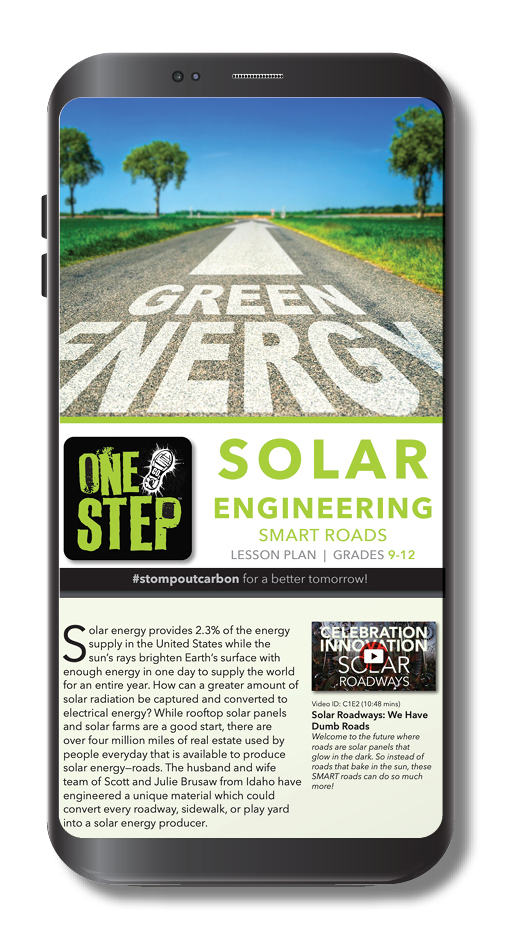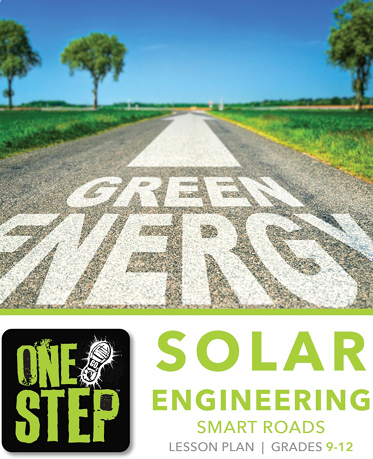
One Step is the missing piece for a New Jersey high school teacher looking to make learning relevant and inspire her students to take action.
New Jersey high school teacher Katherine Nelson has been teaching a wide range of science-related classes for the past 14 years. Although she prefers to create each lesson plan from scratch, she finds that the right supplemental tools and resources enhance her lectures and lessons.
For the 100+ 11th grade students taking her environmental science class this year, Nelson wanted to get creative by mixing traditional teaching methods and powerpoint presentations with entertaining videos that include fun facts, hands-on activities and virtual labs, and — her favorite –– articles that relate to current events. Nelson also wanted to make sure that students could take what she teaches and apply their knowledge out into the world, beyond the classroom.
Learning How to Make a Difference — Now and Down the Road
 When Nelson heard about One Step — an innovative supplemental climate education program for grades 4–12 — from a colleague, it seemed like a “perfect timing scenario.”
When Nelson heard about One Step — an innovative supplemental climate education program for grades 4–12 — from a colleague, it seemed like a “perfect timing scenario.”
“I’m the type of teacher who is always looking for new resources, and when I saw that One Step has video resources, that was one of the things that drew me in,” Nelson shared. The fact that One Step also includes 5E, NGSS-aligned lesson plans and activities was another key aspect. “That was really attractive to me,” she admitted.
The core environmental science curriculum Nelson uses addresses human impact on the environment. When they get to the unit on climate, students spend four to five months focused on topics that span areas of human impact, including energy use, climate data, agriculture, and overall sustainability. “In the course, students appreciate most not the things that they’ve memorized but the tips that they’ve learned so they can make a difference.”
This solution-oriented teaching approach is one Nelson finds important, and is an aspect of One Step that stands out to her. One Step videos feature innovative solutions from around the world that are being developed to address climate and environmental challenges. Students are motivated to take action themselves with an activity tracker built into the One Step app. Using the tracker, they document their sustainable actions and find ideas for new ways they can make a difference. The tracker also shows schoolwide engagement so sustainability becomes a community effort.
“It’s important to me that students walk away from class knowing that there is something they can do; knowing they can make a difference with choices later on down the road,” Nelson explained. “In a class of juniors and seniors, they will be making their own decisions very soon, like voting, paying for electricity, buying new cars, buying groceries. They are now thinking about how they can make wise decisions.”
A Broad Approach to Climate Science with Built-In Supports
One Step has, what Nelson refers to, as “a broad approach,” making it different from other supplemental programs she’s used in years past. Previously, Nelson has presented academic-style supplementary videos in class that often feature overt science speak and high-level academic language. Because her environmental science class is a core class for all high school students, she felt like the One Step videos were extremely accessible for the diverse group.
“The videos came in at a really good level,” she said. “There wasn’t an overflow of information, which I thought was really good. The kids really enjoyed the host Joshwayy’s presentation in the videos because he was approachable, and they liked the way he talked to them.”
One Step’s built-in structure and features that support diverse learners, including English learners (EL), also appealed to Nelson. “I really appreciated that I could put closed captioning on in Spanish because I have EL students in my classroom with no support,” she mentioned. “Being able to have a video that translates was really cool.” Nelson also has students with Individualized Education Programs (IEPs) in her class and shared, “I felt like the built-in structures made the videos really accessible and I was really grateful for that.”
Inspiring Real-Life Action
Nelson admitted that many students who initially walk into her environmental science class are simply there to fulfill their gen-ed science requirement and aren’t that interested at the start. After a few months in class, however, Nelson estimates that “about five percent of my students will go all in. Even altering their career pathways or lifestyle choices to be more in tune to the climate situation,” including students who are now considering adding a sustainability slant or focus to careers like architecture and design. She noted that another 30% of her students want to feel like they are doing something to make a difference.
“Seeing examples of real people doing things is really what helps that middle group to feel more invested,” she said. And, that’s one of her favorite components of One Step’s Celebration Innovation videos.
 After watching the Solar Roadways video, a Celebration Innovation segment that talks about the future of smart roads, students in Nelson’s class were intrigued right away. Their initial reaction was, “Wait, is this a real thing?” This level of questioning and curiosity prompted a longer classroom discourse on solar panels, including students voicing concerns about the lack of solar present in their communities.
After watching the Solar Roadways video, a Celebration Innovation segment that talks about the future of smart roads, students in Nelson’s class were intrigued right away. Their initial reaction was, “Wait, is this a real thing?” This level of questioning and curiosity prompted a longer classroom discourse on solar panels, including students voicing concerns about the lack of solar present in their communities.
Even though Nelson modified the activity because of timing and because she enjoys developing her own lesson plans, she found the prompts and ideas very useful. “It was really easy to pull One Step content into what I had already created,” she stated, adding that she’s always looking for new ways to spice up lessons or add to what she has planned. Plus, she enjoys the hands-on aspect of many of the activities.
Continuing the Conversation Across the Curricula
When asked about using the content from One Step in other subject areas, Nelson sees value in it, particularly for core subjects like English, or elective courses like the social media and social justice courses offered at her school.
“There are a lot of topics within climate change, whether it is the use of different energy sources, farming techniques, or consumption that you can tie into a research paper really easily, as well as what are the solutions or alternatives that will bring to light a portion of the climate crisis. I definitely see a connection there.”
“Those [Celebration Innovation] videos are the best videos in the program,” Nelson quickly stated. The videos not only tell a story of what’s happening in the world but the topics showcase action, empowering students to come up with their own solutions, which is what Nelson hopes to consistently highlight in her course.
Flexibly Filling Gaps
Even though Nelson didn’t begin to use One Step in her environmental science curriculum until mid-school year, she “felt like it was really easy, especially with the timing,” Nelson said.
When Nelson began to look ahead to plan a greenhouse effect lesson in class, she admitted that traditionally she had limited resources to draw from. Now, with access to One Step, Nelson went through all the lessons and pulled everything that aligned with what she would be teaching for the next few weeks, copying all the links to the lesson plan PDFs into her own planning document.
Although she never implemented a full One Step lesson plan start to finish, Nelson was able to take components or ideas from the lessons to add or alter based on the unique needs of her students. “One Step made it really accessible and easy,” she explained. “There was actually a prompt that I saw that I’d never done before,” referring to the activity that accompanied the Greenhouse Effect Climate Talk video that explores how wrapping a beaker with plastic wrap affects the temperature. ”It ended up being really fun for the students,” she noted.




